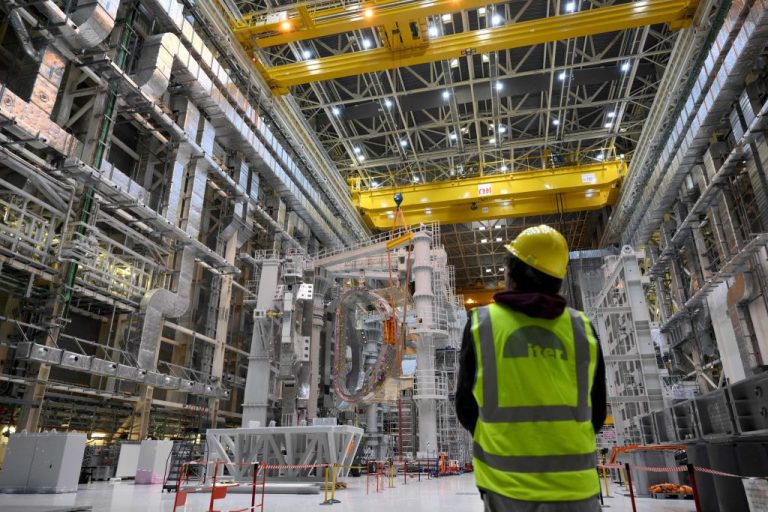This week, at COP28 in Dubai, the White House announced that it is seeking to work with the international community to speed up efforts to develop nuclear fusion, a carbon-free energy source that would transform the world’s energy grids and play a large role in decarbonizing the economy.
U.S. Climate Envoy, John Kerry, said in Dubai on Dec. 5, “We are edging ever-closer to a fusion-powered reality. And at the same time, yes, significant scientific and engineering challenges exist [but] careful thought and thoughtful policy is going to be critical to navigate this.”
Researchers have been attempting to harness the power of nuclear fusion energy for decades, the same type of energy that fuels the earth’s sun; however, the running narrative remains that “fusion energy is always a decade away.”
The Biden administration wants to upend this narrative in a bid to contribute to limiting the impacts of climate change.
In Dubai, Kerry urged nations to collaborate to “harness the power of fundamental physics and human ingenuity in response to a crisis.”
Success
You are now signed up for our newsletter
Success
Check your email to complete sign up
The White House published its fusion power strategy on Dec. 4, laying out a five-step plan including identifying and pursuing opportunities for international cooperation, growing the future global marketplace, coordinating on regulatory frameworks, developing global workforce needs, and improving public education and engagement in fusion energy.
International collaboration
This past November, the United States and the United Kingdom announced a partnership to accelerate fusion energy development, after the U.S. laid out a “bold vision” for the technology in March last year.
The White House wrote at the time that “Fusion could provide abundant, reliable, carbon-free energy to advance President Biden’s goal to get to net-zero emissions by 2050, while increasing energy security and enhancing America’s technological competitive edge.”
“Commercial fusion energy technology has the potential to revolutionize the energy industry, helping combat the climate crisis while meeting the growing electricity needs of the U.S. and the world.”
A number of nations are already collaborating on projects to make nuclear fusion a reality.
The International Thermonuclear Experimental Reactor (ITER), located in southern France, is a collaboration between 35 nations, and late last week, Japan and Europe said they were launching the world’s largest fusion reactor.
However, to date, these types of projects have been plagued by delays and cost overruns.
Both China and Russia are involved in the ITER, with China being particularly aggressive in promoting the technology, Andrew Holland, chief executive officer of the Fusion Industry Association said.
“We’re trying to build a global posse to get there before the Chinese so the Chinese don’t dominate another new technology,” Holland told the Associated Press.
READ MORE:
- Soaring Numbers of Chinese Nationals Arrested at US Southern Border as Communist Party Intensifies Oppression
- Toyota, Other Japanese Companies to Start Hydrogen Energy Investment Fund
Development accelerating
Unlike traditional nuclear power, nuclear fusion doesn’t produce radioactive waste, making it the panacea for the planet’s energy woes.
According to the Fusion Industry Association, to date, more than $6 billion has been invested globally to bring fusion energy to market and there are more than 40 fusion companies globally now, with over 80 percent of them in the United States.
Thirteen of these companies just emerged over the past year and a half.
Unlike traditional nuclear energy, which creates energy by splitting atoms, fusion energy creates energy by imitating processes of the sun, applying immense pressure on hydrogen atoms to create entirely new helium atoms that can release a staggering amount of energy.
The Massachusetts Institute of Technology (MIT) explains it this way, “To make fusion energy, scientists must first build a steel chamber and create a vacuum, like in outer space. The next step is to add hydrogen gas. The gas particles are charged to produce an electric current and then surrounded and contained with an electromagnetic force; the hydrogen is now a plasma. This plasma is then heated to about 100 million degrees and fusion energy is released.”
READ MORE:
A major breakthrough
Last year, at the Lawrence Livermore National Laboratory in California, scientists, for the first time, managed to engineer a fusion reaction that produced more power than was used to ignite it. The result is known as a “net energy gain,” the ultimate goal of the technology.
Scientists used 192 lasers to create temperatures multiple times hotter than the center of the sun to create an extremely brief reaction.
Dennis Whyte, director of the Plasma Science and Fusion Center at MIT told the Associated Press at the time, “It’s almost like it’s a starting gun going off. We should be pushing towards making fusion energy systems available to tackle climate change and energy security.”
Biden referred to the breakthrough as an example as to why more investment in the technology is needed.
“Look what’s going on from the Department of Energy on the nuclear front. There’s a lot of good news on the horizon,” he said at the time.
However, there is still much work to be done.
University of Rochester professor, Riccardo Betti, said that there is still a long road ahead before fusion energy becomes commercially available.
“You still don’t have the engine, and you still don’t have the tires,” he explained, adding that, “You can’t say that you have a car.”
















